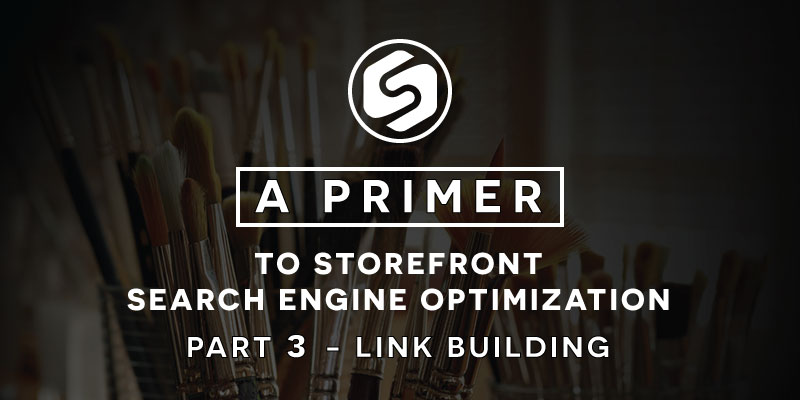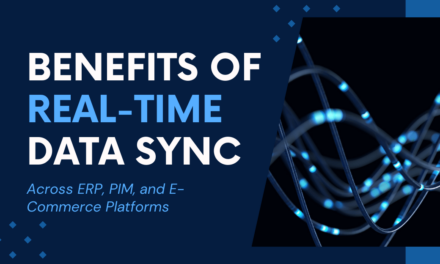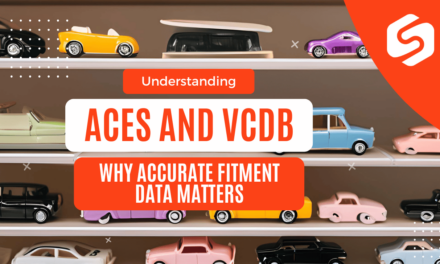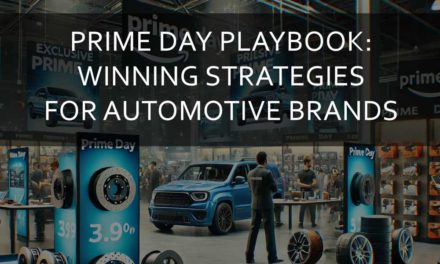
Link Building – A Primer to Storefront Search Engine Optimization Part 3

 It’s time to talk about link building. In our first two articles we discussed the foundation of search engine optimization and content marketing. We learned that SEO is about increasing the number of search terms that can be entered to find your site, while simultaneously moving your place in those search results closer to the top of page one on Google. We also learned that writing high quality articles for your site is a method of diversifying what terms you can be found for.
It’s time to talk about link building. In our first two articles we discussed the foundation of search engine optimization and content marketing. We learned that SEO is about increasing the number of search terms that can be entered to find your site, while simultaneously moving your place in those search results closer to the top of page one on Google. We also learned that writing high quality articles for your site is a method of diversifying what terms you can be found for.
But what else can you do with those articles? How can you drive even more traffic to your site?
The Second Approach to e-Commerce SEO is Called “Link Building”
We’ll start by saying that link building is not for the faint of heart, and it takes a lot of work and organization to do it yourself. We’ll cover some information here so you can familiarize yourself with the concept, but we’re not going to get too in-depth.
Link building literally means getting sites to build links to your site and your content. That’s it. It’s that simple. Content marketing is the number one way to get more phrases to show up in Google results (since you’re literally putting more phrases on your site). Link building is the number one way to get those results to move up in the rankings, and eventually show up on page one.
Why? Because Google assumes that if your content is worth linking to, then there must be value in it. And the more sites that link to your content, and the more reputable those sites are, the faster and higher you’ll rise in the Google search engine results.

As an example, having a one year old site with a small amount of content linking to you might give you a small bump. However, having a ten year old high traffic big name site linking to you gives you a big bump. And having a .gov site linking to you (since they so rarely do) tends to give you a huge bump. .edu sites are up there too.
A word of warning here. People used to game the Google link algorithms by buying links or building what were called link networks. Google banned this practice several years ago and even created an algorithm to specifically look for abusers (it’s called Penguin). If you are found to have a lot of spammy links or Google thinks you paid for a link you will be massively downranked, and you’ll have to do a lot of work to prove to Google that you got rid of all of these links. What am I trying to say? Having lots of links to your site isn’t always good. Having quality links to your site IS good.
Link Building is a LOT of work, but it WORKS
We mentioned above that link building takes a lot of work and organization. That’s because people – especially these days – don’t create links from their website to your website easily. High quality sites are inundated with people asking for links so it’s hard to be heard above the din – even when you have written great and interesting content (sites usually link to your content, not your homepage).
So you research the web and find a few hundred sites that might be interested in your content. Then you have to find contact information for all of these sites (and on many larger sites there are different contacts for different pages). Then you have to draft an e-mail that will convince these people to link to your site (we’ve heard that phone calls to site admins are actually working better these days than e-mail). Then you have to send the e-mails and followup e-mails. And you have to keep track of who you contacted and what you said so you can potentially repeat winning e-mails with other sites. And with all this, you’ll only get a very small handful of sites linking to you. But even one additional link to you from a medium to high value site can have a tremendous impact on your rankings.
Many sites actually hire contractors and companies to handle their link building for them. It’s easily a full time job. But, once again, make sure you use a reputable SEO firm to do this work. Ask them how they get their links, how they make sure they aren’t spammy, how to make sure they are from relevant sites (if you get someone to link from their site on Mozart to your cell phone case site, Google may call that a spammy link and downrank you).
Link Building Link Types and Text
Just as getting a site to link to you in the first place signals Google that there is content on your site worth reading, how someone links to you also signals Google in many ways.
First off, there is a type of link called a “No Follow”. If you examine the actual HTML link code, you’ll see something like <a href=”http://www.yoursite.com/yourarticle” rel=”nofollow”>. The “nofollow” keyword is a terrible thing for you. Why? Because it tells Google that, while the other site is linking to your site, they don’t want search engines to use this link as an indication that they endorse the site or want the link to have any influence in rankings in search engine result pages. In other words, this link does absolutely nothing for you. Zilch. Zero.
If you continue to look at the syntax of a link… <a href=”http://www.yoursite.com”>Link Text</a>… the link text is also very important. Most often, the link text will be the name of your company or site. For example, if you are linking to our website you might say “Check out SureDone for more information”, with the word SureDone being the link text. This is great, but what’s even better is to get the company that links to you to use descriptive text as to what they are linking to. For example, getting someone to link to this article with something like “SureDone has a great article on link building in e-commerce” is wonderful. This signals to Google that the text “link building” and “e-commerce” are important and help you raise rankings for those phrases. And if you get multiple sites to use these same phrases, that skyrockets your rankings for those terms.
Who To Get Links From
Google actually cares about the site that links to you. The online reputation of a site is factored in when they determine how  much influence a link to you should carry. Dot gov (.gov) sites tend to carry the most weight. This is because most dot gov sites have very strict guidelines about linking to non-government entities. If you can get a link from one of these sites, you must have some wonderful content!
much influence a link to you should carry. Dot gov (.gov) sites tend to carry the most weight. This is because most dot gov sites have very strict guidelines about linking to non-government entities. If you can get a link from one of these sites, you must have some wonderful content!
Dot edu (.edu) sites also carry a lot of weight. Only qualified educational institutions are allowed to have dot edu extensions, and while they are a bit less stringent than dot gov sites with regards to the types of sites they link to, they still tend to have guidelines for the quality of the material they connect to. They will carry a lot of influence, especially if they are from a prestigious university (yes, Google does track this).
Secondary school sites (.k12) will carry a bit of weight, but nowhere near the amount of weight of dot gov and dot edu sites. The remainder of domain types carry pretty much equal weight – .com, .net, .org and the hundreds of new other secondary domains.
Google will also look at other aspects of the sites linking to you. For example, if the site that links to you has a ton of inbound links from high quality sites, Google will give their link to you a bit more “juice”. If the site linking to you has a lot of traffic or ranks highly for a lot of content, Google will also give their link to you a bit more juice. There are a multitude of different criteria that Google uses, most of which are unknown, as to how much juice a link to you will carry – but one thing is proven, and that’s that the more links there are to you, the more you will rank.
A Few Caveats about Link Building
Link building for e-commerce sites, like content marketing, is a long term strategy. Getting a link does not push you up in the rankings overnight. On average, it takes about 10 weeks to see a one spot increase in ranking (for highly competitive search terms). The more links you get in a shorter period of time, the faster you’ll rank and the higher you’ll go. Also, the lower you are ranking for a search term, the more impact a link to you will have on raising the visibility of that term. It’s much easier to move from rank 92 to rank 50 for a search term that it is to move from rank 8 to rank 7. Much easier. So it’s often a good strategy to focus on getting a lot more lower ranked search terms moved up dozens of places than it is to get a single competitive term moved a single spot.
So…
With all of this said, link building still remains the best way to get your content ranked. Period. So you need to invest in it and let people know you exist.
Some additional Resources









